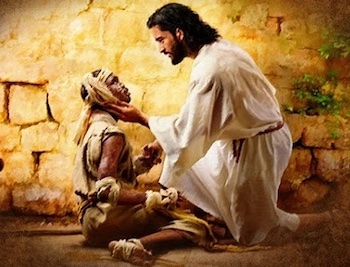3rd Sunday of Lent A
Thirst for water and a better life is the context for this Sunday’s gospel. Life had not been working well for the Samaritan woman. She had been through five unsuccessful marriages and found herself shunned by the women of the village for her shameless behaviour of living with someone who is not her husband. And then she had to walk a distance in the midday heat for water at the village well. She needed a better life, one that ‘worked’ for her. The story here is not a moral tale about her lifestyle but a symbolic account of her coming to an encounter with Christ, the prelude to a whole new life. I use the word ‘encounter’ to refer to the divine gift of a deep, consciousness-altering and personal transformation
People seek happiness in different waters and many from fountains that run dry. Jesus found this woman while she was seeking yet another day’s supply of water. The scene is surreal: Jesus breaks cultural and religious taboos and startles her by asking for a drink of water. The incident may have set her wondering if this is the break in her sad life she has been waiting for. This strange man was no run-of-the-mill Jew. If she knew who Jesus really was and that he would say, “Let anyone who thirsts come to me and drink…fountains of living water will flow from within him,” she would have asked him for this living water and he would have given it – cf. John 4:10 & 7:37.
“Living water” is an analogy for grace, the gift of God that leads to eternal life. “Anyone who believes in the Son has eternal life,” Jesus had assured Nicodemus – John 3:36. In the gospels, faith is more than a belief of the mind. It is personal trust and commitment that responds to a revelation, as at the wedding feast of Cana when “Jesus let his glory be seen, and his disciples believed in him” – John 2:11. In John’s gospel there is an incident where Jesus revealed himself to a blind man who had been healed, after which the blind man said, “Lord, I believe, and worshipped him.” – John 9:35-38.
John’s Gospel doesn’t mention the transfiguration in the way the other three gospels do, but the issue of Jesus’ identity is on every page of it. Our discovery of Jesus is not a matter of book-learning. The truth and reality of Jesus, as Thomas Aquinas discovered, comes through personal encounter with him. Bernard of Clairvaux wrote in his treatise ‘On Loving God’ about a momentary encounter he had in prayer that was life-changing, personally transformative. There are people today who seek to recover a sense of the sacred – whether in the sacred scriptures, in prayer, in nature, in the cosmos or in serving God in the poor.
“Sir,” pleaded the woman, “give me some of that water so that I may never again be thirsty.” Like Peter, who felt wonderful to have been on the holy mountain of the Transfiguration, this woman felt something new happening to her at Jacob’s well. “Give me some of that water,” she said. ‘That water’ led her to wonder if the stranger who was speaking to her was the Messiah, the Anointed: “I am he” said Jesus, and her eyes were opened. The woman of Samaria represents all who seek to know Christ better.
Fr. QQ – 03/09/2023




